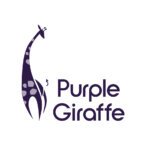Introduction
If you have ever studied at university, it’s very likely that you have had to suffer through the tedium of an introductory class. Relying heavily on tedious, mind-numbing course work and flashcards and presented by an ancient lecturer, its aim is to teach its class of a thousand-something students the basic underlying principles of the subject.
In my case, this class was Introduction to Psychology. While I know these classes can often lack lustre, I found that the key lessons I learnt actually applied to real life. If you didn’t pay attention to entry-level psychology lectures or simply didn’t score the opportunity to take such a thrilling class, don’t worry! I’ve listed some basic psychology theories from the motivation, memory, and personality disciplines that provided me with some seriously valuable marketing tools.
Theory 1 – Motivation
Motivation is described in Psychology as the desire and action one takes to obtain something or complete a goal[1]. Businesses are constantly trying to motivate consumers to behave in certain ways, whether that be to buy their product, try their service, write reviews, click your link… the list is endless. The main two types of motivations that are valuable for marketers to become familiar with are intrinsic and extrinsic motivations.
Intrinsic motivation is internal motivation. This kind of motivation comes from an individual wanting to complete a goal for their own benefit or enjoyment. This incentive could be to better themselves or because they feel competent at doing it. An example of an intrinsic motivator would be if a consumer worked out at the gym in order to feel good about themselves.
This theory can be turned into a helpful tool for us marketers because we can influence a consumer to purchase or interact with a product by suggesting the reward of personal satisfaction. While health and wellness companies have a distinct advantage for using this technique, this can also be done through attaching your product/company to a good cause or charity. People who are intrinsically motivated are less likely to experience buyers’ remorse because they genuinely feel they have made a good selection.
Extrinsic motivation is, you guessed it, external motivation. People are extrinsically motivated when they desire to complete an action in order to obtain something like a reward or to avoid punishment from an external force. This could range anywhere from buying a fancy car in order to get respect from your peers to splurging on a vacation in Bali in order to gain more followers on Instagram. Let’s say your teenaged son goes to school one day to find all of his classmates are now taking major style inspiration from the 80s. While he – like many others – might think this is an era we shouldn’t recreate, he may alter his look in order to avoid reticule. Marketers can use extrinsic motivations to their advantage by influencing consumers to purchase their product by granting reward, such as loyalty points, or by assuring acceptance from others.
Theory 2 – Memory
Do you remember your first kiss? What about how to ride a bike? Now, how about the last ad you saw on Facebook? Memory is a vital psychological topic to marketers because a campaign is nothing if it is not remembered. Psychologists believe the mind is made up of both a short term and long term memory. While short term memory allows people to recall things for a short period of time, long term memory is what marketers strive for. Long term memory refers to being able to recall information over days or even years.
That being said, getting information from the short term memory to the long term memory is no simple task. One way psychologists suggest memory is recalled from the long term memory is through associations or connections. For example, researchers have figured out how colours make individuals feel. When an individual thinks of something hot or exciting, they may imagine the colour red. If they see something blue, they may feel calm and peaceful. This colour association technique is often used in the branding of products and through advertising.
Another newer memory recalling technique used by marketers is scent marketing. Scent is widely thought by psychologists to be the best at triggering memory recall and is more heavily linked with emotion than other senses. Scent marketing involves including a particular smell in a company’s store to lure the customer to connect their brand with a familiar memory. In the United States, hotel branches are using signature scents to make travellers feel more at home. Freshly baked cookies or clean linen are a few of the many smells you may happen to discover being used as marketers believe the customer will feel more relaxed when these smells are present. I wouldn’t be surprised if this practice makes its way to Australia very soon. You can read more about Scent Marketing here.
Theory 3 – Personality
Personality is defined by someone’s unique way of thinking, learning, feeling, and acting. American psychologist Gordon Allport developed the idea that individuals are not made up of one single personality but instead are made up of a combination of traits. This idea changed the world of personality research and is now even being used by marketers in order to accurately target their desired audience.
The Five Factor Personality Model is a classification of personality that categorises all people into belonging more or less to five distinct personality traits. These traits are labeled as openness to experience, conscientiousness, extraversion, agreeableness, and neuroticism. The Five Factor Personality Model (or Big Five Model) plays an important role for advertisers when it comes to appealing to certain demographics because personality traits can often tell us about a consumer’s lifestyle, hobbies, age, and other important characteristics. If a marketer knows which traits their target audience possess, they are able to more easily advertise in a way that would appeal to that targeted audience’s personality.
Brand communicators are also able to personify their brands using the Five Factor Personality Model as a framework. This is useful because if an individual is more likely to form an emotional attachment to the brand is they feel they share the same values and character. For example, if a brand is trying to appeal to an audience that rated highly on the extroversion scale, they may advertise the brand as being exciting or as being able to bring people together. Doing such a technique may help to create associations between the brand and the consumer that will eventually connect the consumer and the brand is a harmonious type relationship.
Conclusion
As you can see, basic psychology can provide helpful outlines for successful marketing strategies. Topics such as intrinsic and extrinsic motivation, memory association, personality frameworks help give marketers insight into the mind of the consumer which helps the brand develop meaningful and long term relationships with their audience. Whether you are into the neurological world of Freud and Pavlov or not, there’s no denying that some simple psychology principles can be useful in the cutting-edge world of marketing.
Moral of the story: pay attention to your boring teachers, people!
[1] https://www.alleydog.com/topics/motivation.php#.XKKhyC2B0nU







